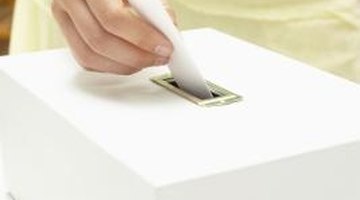Surveys collect data through researchers asking subjects to respond to questions. These questions can be qualitative, such as when the researcher asks open-ended questions and records the answers. The questions can also be quantitative, meaning that the researchers measure responses. For example, researchers can ask multiple-choice questions and record the percentage of respondents who choose each answer.
Respondents
Independent variables are controllable variables. Researchers pick their independent variables and manipulate them. The independent variables affect the dependent variables. In the survey, researchers can view the respondents as dependent variables and the questions as independent variables. The researchers can choose what the questions will be, giving them control over them. The ways in which the respondents behave in the survey depend on the questions. Researchers want to develop questions that will ensure that respondents give the most exact answers possible so the survey results are reflective of the real views of people surveyed.
Environment
Researchers can change the independent variable to have different results. They can see how respondents answer based on distinct factors in the survey, such as the wording of the questions. Independent variables that can be manipulated in the survey are not only limited to questions but can also include the environment that the survey is conducted under. For example, the researchers can conduct themselves in ways that influence how the participants respond to the questions, with the friendliness of the researcher's tone potentially affecting the survey results.
Environmental Effects
The environment in which the researchers conduct the survey might influence the results of the survey, such as the color of the paint on the walls of the room. The participants can be independent variables, with the researchers getting different survey results based on whom they choose to participate in the survey. Because of this, researchers try to randomize the survey respondents and also make sure the respondents reflect the diversity of the overall population so the results are more accurate. For example, the survey designers should not select only male 45-year-olds for a survey seeking to understand the opinions of Americans as a whole.
Extraneous Variables
One kind of independent variable is the extraneous variable. Extraneous variables are variables that have an uninteresting effect on the research. In statistics, uninteresting results are results that are not helpful to the actual goals of the survey. For example, the cultural background of survey respondents might influence how they respond to political events. Researchers can study the extraneous variables and then control for them in the experiment. Randomization helps decrease the problems with extraneous variables by reducing the chances the survey participants as a whole will have a specific bias.
Related Articles
References
Writer Bio
Chuck Robert specializes in nutrition, marketing, nonprofit organizations and travel. He has been writing since 2007, serving as a ghostwriter and contributing to online publications. Robert holds a Master of Arts with a dual specialization in literature and composition from Purdue University.











